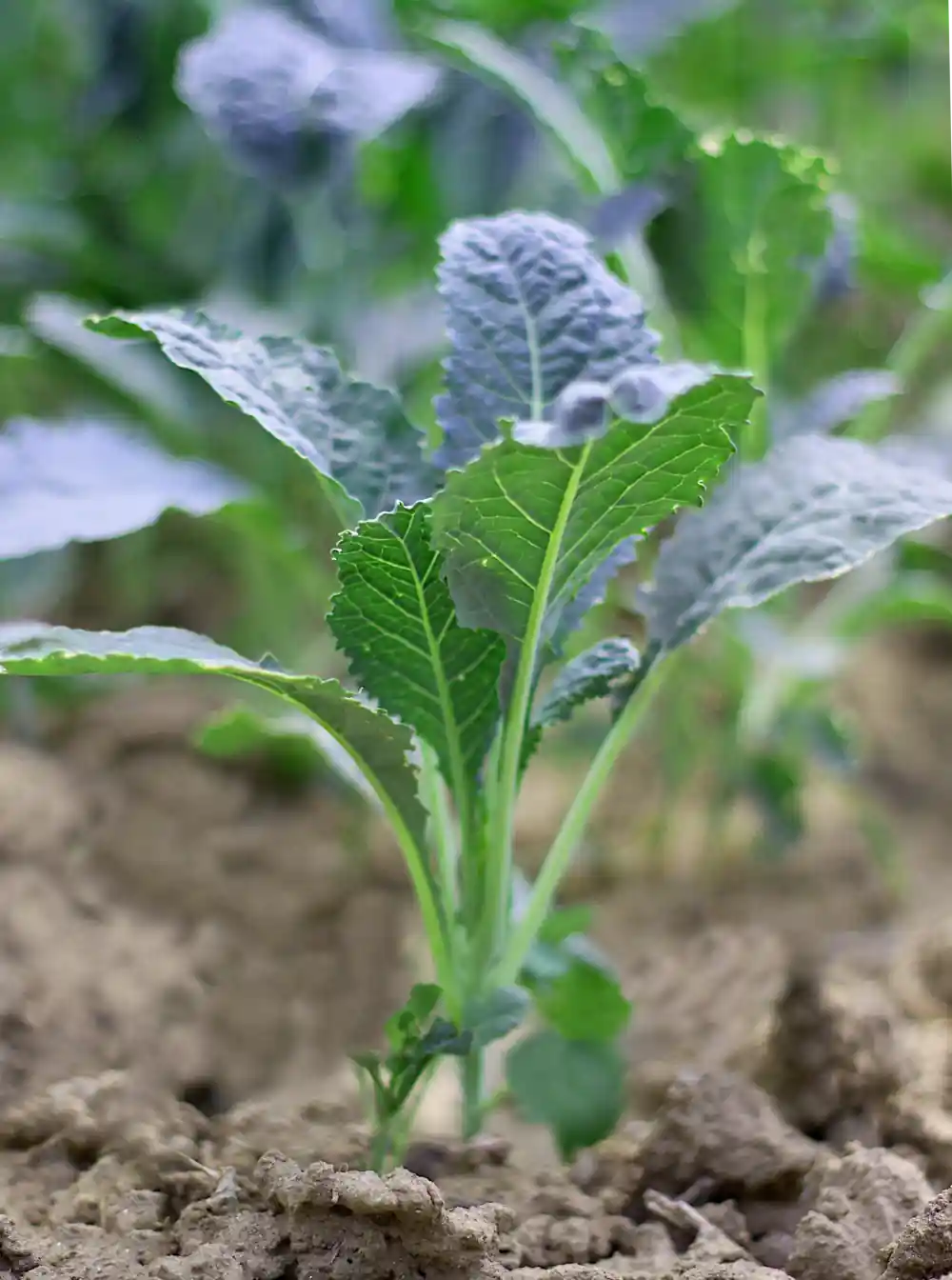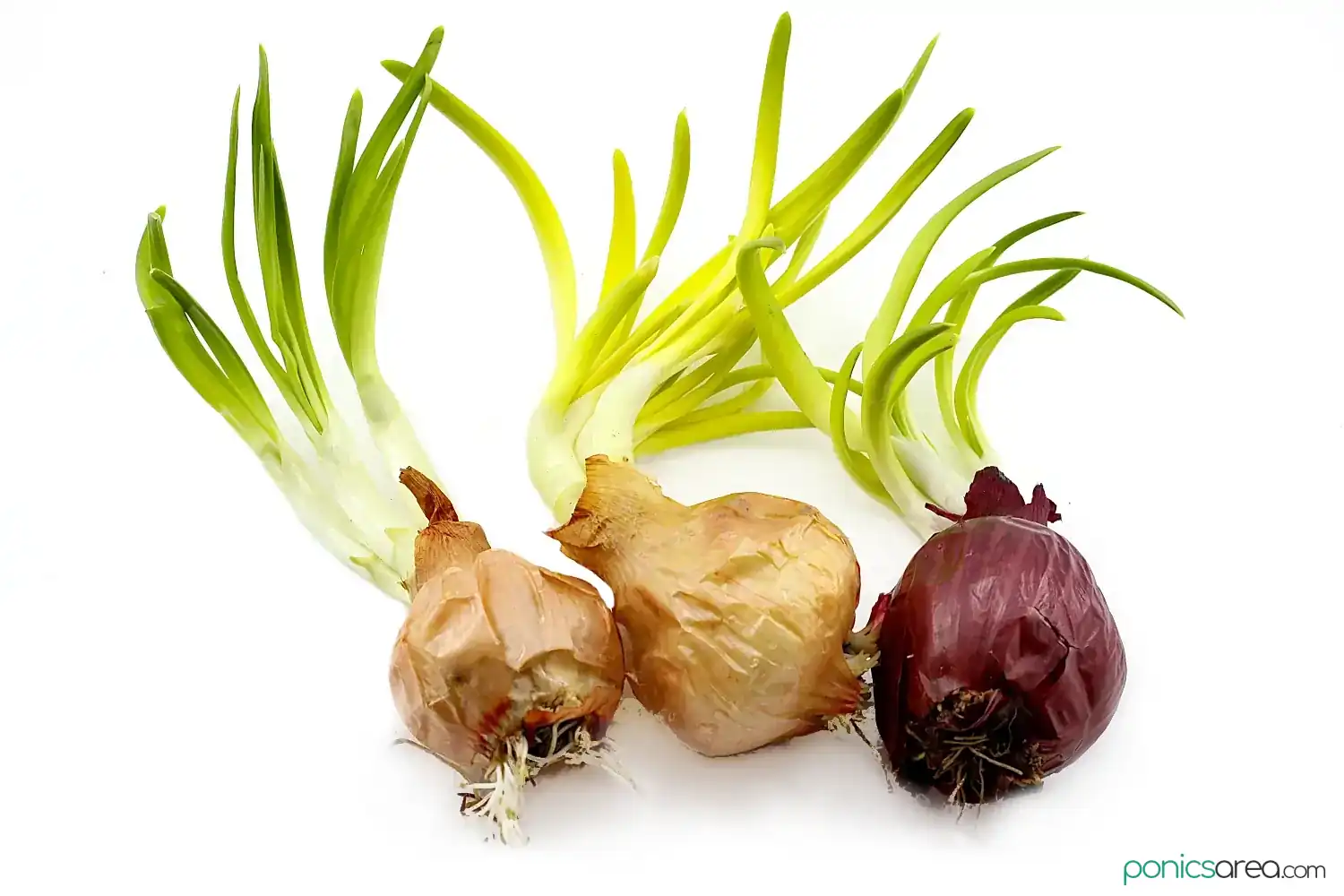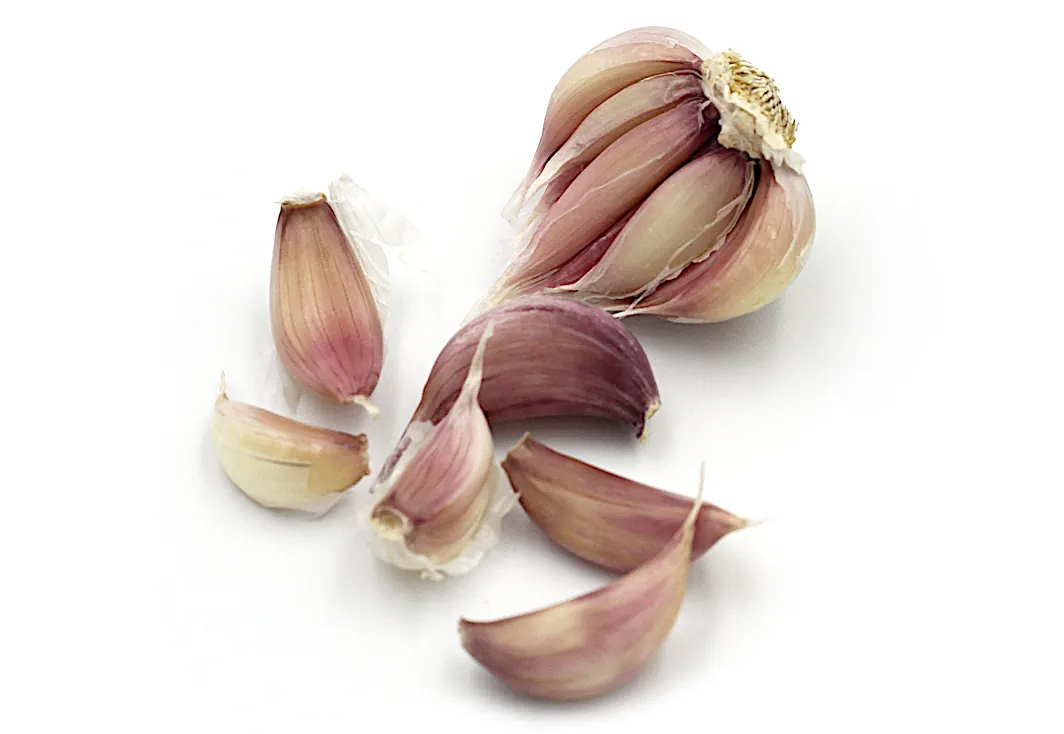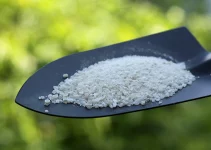There are a number of reasons why we might be looking for vegetables with shallow roots.
Some of you might want to know which vegetables have shallow roots because you want to grow vegetables in garden beds that don’t have a lot of soil depth. In that case, growing plants whose roots don’t grow too deep into the ground is what you need.
It’s also nice to know which vegetables don’t require too much depth of soil in case we want to grow in pots/containers that aren’t too big.
Companion gardening is another endeavor where we must understand the root system of plants if we want each of them to thrive in their allocated patch of soil.
Table of Contents
31 Vegetables with Shallow Roots to Grow at Home
The biggest advantage for vegetables with shallow roots is that they can be grown even if we don’t have a lot of space.
For example, if we want to grow indoors in containers or pots, we can certainly do so very easily if we pick these vegetables that don’t need too much soil depth for a healthy root system development and a bountiful growth.
Some of these vegetables with shallow roots can also be grown in very basic hydroponic systems. Check out my guide on the Kratky method in mason jars if you want to experiment with hydroponics on a budget.
The most popular vegetables with shallow roots are:
- leafy greens: lettuce, kale, chard, spinach and baby spinach, arugula, watercress, mustard greens, collards, etc.
- herbs: basil, parsley, mint, oregano, cilantro, chives, sage, thyme, tarragon, etc.
- spring onions (green onions)
- leeks
- onions
- garlic
- broccoli
- cabbage, Chinese cabbage, bok choy, Brussel sprouts, cauliflower
- scarlet globe radishes
- corn
- strawberries (fruits with shallow root system)
- microgreens
How much soil do we need for shallow-rooted vegetables?
When we think of growing these shallow-rooted plants, we can assume that we only need 4-6 inches of soil to grow a successful crop. That’s true for most of those that I have enumerated above. There are also exceptions so you should always check out just what container size your plants would thrive in.
Growing most of these shallow-rooted vegetables in 6-, 8-, 10-inch deep containers/pots with drainage holes would be best.
If you can grow it successfully in a 6 or 8-inch pot, that can be considered a shallow-root.
Check out this table here because it offers a complete list of shallow-, medium- and deep-rooted vegetables.
1. Lettuce

I am pretty sure that most of us think of leafy greens first when we think of growing vegetables with shallow roots.
Lettuce is the perfect plant to grow if we are beginners or if you have a few empty containers around the house. It also works nicely for garden beds if we want to grow outdoors.
I also want to mention that if you learn how to grow lettuce, the same growing conditions will pretty much apply to growing all the other leafy greens.
These are the steps for growing lettuce in containers:
- grab a 6-8 inch pot or container – you can choose a 12-inch pot if you want a bigger crop
- use a potting soil with plenty of organic matter (compost, peat)
- sow the lettuce seeds 1/2 inch deep
- leafy greens do their best growth in cool weather so you can even grow lettuce and other leafy greens during the winter
- a few hours of morning sun are enough so it can be grown easily indoors, although it’s a plant that also thrives in all-day sunlight
- maintain the soil moist, don’t let the soil dry out completely but make sure not to overwater – consistent but shallow watering is, in general, the best for vegetables with shallow roots to prevent draught
I also wrote about growing hydroponic lettuce if you want an alternative to soil cultures.
2. Kale

Kale is another vegetable with shallow roots that is just so amazing to grow if you don’t have much space.
Or if you want to grow in 8 to 12-inch pots. It’s also perfect for shallow garden beds.
I recommend at least 8-inch pots for growing one kale plant.
Unlike lettuce, arugula, watercress, spinach, chard, kale is a leafy green that needs a little bit more space than what a 6-inch pot can offer.
That’s why I recommend using an 8-inch pot for growing one kale plant. But we get a lot of leaves for a single plant, that’s what’s amazing about it.
If you want to grow 2 kale plants, you’ll need a 12 inch pot.
Kale likes the same soil we use for growing lettuce, well-draining soil with lots of organic matter (compost).
Sow kale seeds ¼ inch deep – just barely cover the seeds with soil.
In an 8-inch container, you can sow 4-5 seeds, about 1-2 inches apart. You’ll only keep the strongest seedling and cut the others.
Kale needs full sun. Use grow lights, even a cheap LED grow light bulb if your plant doesn’t receive enough light.
As always, keep the soil moist.
3. Spinach and baby spinach

In order to grow both baby spinach and spinach you’ll plant the same seeds, we don’t have to buy different seeds.
The difference is that, if we want to grow and eat baby spinach, we’ll harvest the leaves when they’re tiny and tender. You can harvest the leaves as tiny or as big as you enjoy eating and cooking with them.
I absolutely love eating raw baby spinach so I harvest the leaves 15-20 days after sowing the seeds.
The leaves will grow back but each time they grow back they will be less and less tender, which also happens with lettuce. However, doing 2-3 harvests of baby spinach leaves is possible for this awesome vegetable with shallow roots.
If you want to grow spinach and baby spinach, the only important thing to keep in mind is that you should maintain a temperature of 75 degrees F (24C).
As long as the temperature is low, this leafy green will thrive. It’s awesome for colder seasons, just like lettuce, which is perfect.
In order to grow spinach and baby spinach, you only to follow a few simple steps:
- sow the seeds in clumps of 2 or 3
- sow the seeds ½ inches deep and 2 inches apart
- water the soil immediately after sowing
- maintain a temperature of 75 degrees F (24C)
- make sure to maintain a moist soil all the time but don’t water it until it’s soggy
- use grow lights for 14 hours per day if you can’t place your containers on a window sill that receives light all day long
- for baby spinach, harvest leaves 15-20 days after sowing
4. Herbs

Growing herbs indoors in containers is one of the easiest things we can do if we want to elevate our dishes without going to the supermarket. All we have to do is to grow our own herbs in whatever containers we have around the house.
I recommend starting off with a 6-inch pot or with an unused container that can contain 6 inches of soil.
Basil is one of the most delicious herbs that can be used for a multitude of dishes, especially if you enjoy Thai or Italian cuisines. Check out my guide on how to grow basil from seed if you want detailed instructions.
Cilantro will need lower temperatures if you want to prevent it from bolting. That’s the only thing you must keep in mind.
Parsley can adapt to a lot of different conditions, including lower temperatures.
Chives are easy to grow and they’re an awesome alternative to green onions.
Mint is better grown in containers than in the garden because it’s an invasive plant.
On the other hand, lavender is best grown in the garden or in at least 12-inch pots if you want beautiful, big bushes.
The same goes for rosemary, 12-inch containers are the best because it can grow into a big bush.
All in all, I advise you to read up on the specific conditions each herb requires for growing big, healthy leaves but, generally, they won’t require much.
Just remember that herbs do their best when they’re pruned regularly.
5. Spring onions (green onions)

The quickest way to grow spring onions is from sets (small onion bulbs). It takes a bit longer to grow onions from bulbs.
Each set will grow into a spring onion or a big bulb onion if it’s left to complete the entire onion life cycle.
Plant the sets with the roots down and the pointy tip up.
If you just plant the sets just for spring onions, you can plant them quite closely together because they don’t need much soil to grow. That’s why you can use smaller containers.
Grow in a fertile soil.
Make sure that you don’t expose the onion plants to extremes of cold or heat.
You can grow green onions in cool weather so they’re great for growing indoors during the winter.
You can also grow chives, which are actually a herb. They’re very easy to grow.
6. Onions

If you let those green onions continue to grow, then they will continue to grow until we get bulb onions.
Thus, we can harvest some green onions and thus space out the plants, offering them enough space for the bulbs to develop.
7. Garlic

The same things I talked about when talking about growing onions apply to garlic.
Both onion and garlic plants are not pretentious plants that require special growing conditions.
You can grow garlic from garlic cloves.
Plant the garlic clove with the root-end side down and the pointed side up.
Plant the garlic cloves 2-3 inches deep.
You can space them 3-4 inches apart.
You can grow 3 garlic plants in a 6-inch pot. In a 10-inch pot you can grow 10 plants. That’s the way it goes for these vegetables with shallow roots.
8. Broccoli
Have you ever considered growing broccoli? You totally should because it won’t need much soil depth.
Use a potting soil with plenty of compost, broccoli plants are heavy feeders.
Plant 2 broccoli seeds per container at a depth of ½ inch. Cover with soil and water thoroughly.
Seeds should germinate in 5-10 days.
Keep only the strongest seedling and cut the weaker one. It’s best to grow just one broccoli plant per container if you’re growing in smaller pots.
It doesn’t need direct sunlight, it is shade tolerant to a certain degree. Although, 8 hours of direct sunlight daily will ensure that broccoli plants thrive.
If the temperatures rise above 75 degrees F, you risk bolting. It’s not a plant for warm seasons.
Maintain moist soil.
9. Cabbage

Growing cabbage in containers is not that easy because a cabbage plant needs plenty of width.
Cabbage is a vegetable with shallow roots but it can grow very big above ground.
If you want to grow in a container, you’ll have to pick one that is 12 inches deep and 18 inches wide.
10. Scarlet globe radishes
These tiny, round, red vegetables with shallow roots are just so good in salads. They’re crisp, fresh and you should consider growing them in containers.
You can harvest scarlet globe radishes when they have an 1-inch diameter. They grow small and they’re some of the most adorable-looking vegetables.
You can even use a 6 inch pot.
Sow 2 seeds per inch, ½ inch deep. Cover the seeds with soil. Water immediately after sowing.
Germination should take 3-4 days. When the plants get 3-4 leaves, thin them 1 inch apart.
Maintain a moist soil.
11. Strawberries

Strawberries are grown from runners. Once you get your runners, things will be very easy.
The awesome thing about strawberries is not only how delicious they are. We can’t grow blueberries or raspberries as easily, those need to be grown in very big containers or in the ground.
But strawberry plants can be grown in small pots.
And we can even grow strawberries vertically, which increases our crop yield but doesn’t take up much space at all.
Besides the fact that you need to get runners for planting, you should also know that you can choose between short-day varieties and day-neutral varieties.
If you don’t have access to much sunlight, get a day-neutral variety, which only needs sufficient warmth.
Use fertile soil with good drainage.
Since strawberries are plants with shallow root systems, they can be susceptible to drought. Make sure to water often so the soil is moist.
Also, keep in mind that you’ll have to do the pollination yourself if you grow strawberries indoors.
Speaking of fruits with shallow root systems, blueberry and blackberry plants can also be added to the list of fruit bushes that can be grown in containers. Albeit, the containers will have to be considerably bigger than those used for growing strawberries in pots.
12. Microgreens

It’s improper to call microgreens shallow root vegetables because these are not vegetables.
Microgreens are the seedlings of the seeds we’ve sown.
Since they are harvested when they’re in their seedlings stage, microgreens require only a few inches of soil.
I also wanted to mention them because microgreens are absolutely perfect for those who want to enjoy some greens but don’t have too much space to grow them.
Plus, we can even microgreens on paper towels, which is pretty incredible.
I also recommend checking out my recommendations for the best microgreen growing kits if you want a good start for growing a variety of these delicious seedlings.
In a week or two, you can enjoy some crisp, fresh greens in your dishes.
Plants Root Systems for Companion Gardening
Why did I also want to address companion gardening when talking about vegetables with shallow roots?
Because if you plan on planting a lot of vegetables, flowers, herbs and trees next to each other, then you need to be aware of what type of root system each of these specimens has.
When it comes to plants, we can categorize them as being shallow-rooted, medium-rooted or deep-rooted plants.
If we’re doing companion gardening, we need to do a mix of this root system.
Plants with shallow roots should be placed next to plants with deep roots or medium roots so that they don’t compete for the same soil resources.
If we only have shallow-rooted vegetables in the same small space, they will compete for topsoil resources since their roots are at the same level in the soil. Of course, that can be fixed if we boost their development with fertilizers.
Furthermore, another reason to pay attention to root systems is that plants with deep roots can bring up nutrients from deep in the soil. That will enrich the topsoil for those plants with shallow roots.
Medium-rooted vegetables (roots between 18-24 inches) are:
- turnips
- beans
- peas
- carrots
- cucumbers
- peppers
- cantaloupe
- summer squash
Deep-rooted vegetables (24-36+ inches) are:
- asparagus
- artichoke
- winter squash
- tomatoes
- parsnips
- pumpkin
- horseradish
- okra
- sweet potato
Last but not least, I also found this wonderful chart that features which plants play very well with each other when sharing the same ground. It’s a very good guide for companion planting.
All in all, it’s nice to know which are our options for vegetables with shallow roots for all these different reasons, no matter if you want to grow in small containers, shallow garden beds or you are interested in doing companion gardening right.




